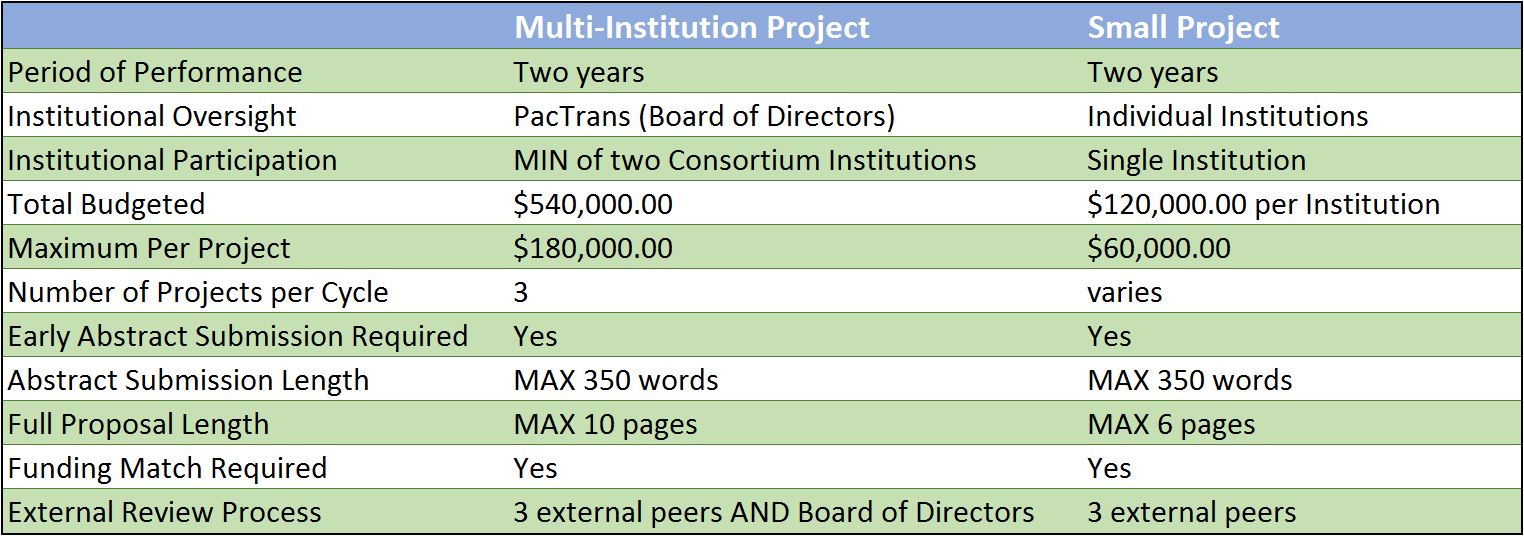Research
PacTrans heavily invests in mobility and safety research to address transportation issues in the region and nationally. Our consortium has at its disposal, many unique data sets, several interactive simulators, and a significant number of innovative labs. PacTrans is made up of distinguished expert researchers, as well as many of the nation’s brightest students, from across the seven universities that collectively address the Strategic Goals highlighted by the USDOT (infrastructure, safety, innovation, and accountability) with a focus on data driven solutions for the mobility needs of people and goods in the Pacific Northwest.

Funding Arrangement
PacTrans receives its funding from the USDOT to operate as a University Transportation Center (UTC). As our About page discusses, our initial center received a total $6.9M to disseminate research over its four-year lifespan and our second center received $7.66M to disseminate for research over its four-year lifespan. As such, every UTC is required to match funding on a 1:1 basis. This means that for every dollar given by PacTrans to a principal investigator for research, another dollar must be given from another entity. PacTrans is required to provide documentation to RITA for dollars matched. Therefore, all PacTrans research projects are required to have matching on a 1:1 basis.
For more information, please read the PACTRANS COST SHARE EXPLANATION
Types of Research
PacTrans engages in two types of research projects: “Small Projects,” and “Multi-Institutional Projects.” Small projects are designed to help foster pilot projects within each consortium university. Large-sized projects (or Multi-Institutional Projects) are designed to include one or more partner institutions. The basic differences between the two types of projects are outlined in the table below.

Two important distinctions between the two types of research are:
- With Multi-Institutional Projects, each institution can lead no more than one research project, while with Small Projects, each institution can lead as many as they are selected to receive funding for; and
- With Multi-Institutional Projects, the applicant must justify the project’s relevance, value, or benefit from working with another institution that cannot be done solely within one institution.
Success Stories
While research is not an end unto itself; and its ultimate purpose is to improve the state of practice, not all research results in practical findings. When a project’s results do merit dissemination to the classroom, policy makers, practitioners, etc. it is vital that that last step be taken. Otherwise, the system breaks down and the research runs the risk of being just another report gathering dust on a shelf while important information exists inside that has the potential to improve our world.
Thus PacTrans actively participates in a process with all of its funded research of finding “Success Stories.” Success Stories are just that, research that merits the added funding and effort to make sure that the findings and conclusions of the project are disseminated to the appropriate entities. This is done through a process called Technology Transfer. For more on tech transfer please refer to this page.


